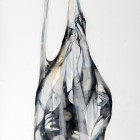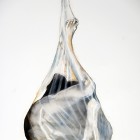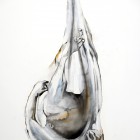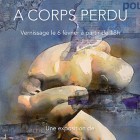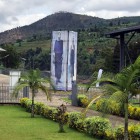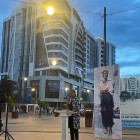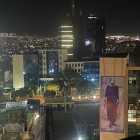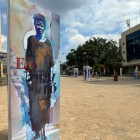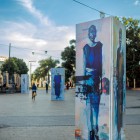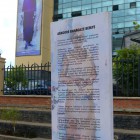A Memorial project for the genocide of the Tutsi in Rwanda
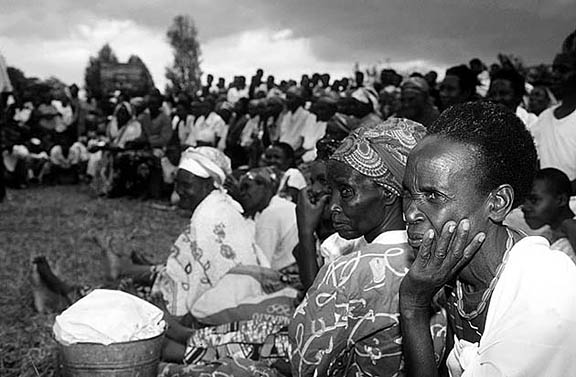
Meeting of genocide widows in Taba. Photo © Bruce Clarke
In the huge task of reconstruction in Rwanda after the genocide, every sector of the community has a role to play whether it be in the material or psychological reconstruction. Every sector, including artists. However, confronted with the enormity of what the genocide was, we are obliged to rethink the responses concerning forms of art or "social therapy" which might have been proposed in other circumstances: other circumstances, by definition, incomparable: genocide goes beyond everything. No science is adequate when faced with the scale of the social fracture existing in Rwanda after such an event. Art, some will say, is even less adequate.
There is thus a multiple challenge facing us. How is it possible that a memorial, a "work of art", render justice to the enormity of the event - genocide of the Tutsi population and the extermination of Hutu democrats. Secondly, how can the form of the "memorial sculpture" be dignified and yet communicate the enormity of the event to as many people as possible? Lastly, how can we integrate into its very creation a commemorative ceremony, a cathartic and pedagogic process involving as many people as possible, perhaps even the killers too?
It was necessary to design a "sculpture" which took account the importance of community participation in the construction of the monument. For this reason it is being built as a collective monument in partnership with the principal civil society associations: IBUKA, Pro-Femmes, AVEGA amongst others.
One million stones, each bearing the name or a distinctive sign of a victim, will be posed on a site of approximately one square kilometre.
The stones will be posed from a central point gradually opening out towards the periphery, as the Garden becomes larger. In this way, after posing the first stones, more and more people will be able to participate in the ceremony without hindering each other. As the stones are placed, the design of the memorial will take on a form representing the terraced hills of Rwanda.
The construction of the memorial will in itself be a process of remembrance and of contemplation. The commemorative ceremony will consist in the posing of stones. Simple and solemn. Groups of peoples or even individuals will each take a stone, mark it with the name or with a distinctive sign identifying a victim and then place it in an ordered fashion, in series, after a stone previously placed. Each stone will have an individual identity, and yet will be an integral part of the overall memorial representing the totality of the victims.
The stones will be placed by members or friends of the victim''s family in the course of a commemorative ceremony. But not exclusively. Any ither person who feels conceerned, Rwandese or not, will be able to place a stone in memory. This ceremony could go on for several weeks or even months. It could even be a long-term process. In the months or years following the institutional ceremonies in April, individuals could come and place a stone in memory. The garden will thus grow on its initial site even after its official inauguration.
Stone, by definition anonymous will be individualised by associating a distinctive sign in remembrance of a victim. This sign could be the name engraved, a photo, a letter etc. It could be permanent or ephemeral. The group of artists working on the project will give technical assistance to those who need it.
By its very nature, the Garden will be the biggest collective creation of modern times. It will be defiant in the face of those who try to forget the genocide.
Nyanza Kicukiro has been designated as the site on which the Garden will be constructed. It is near Kigali and is symbolic of the abandonment of Rwandese by the international community during the genocide. It will be visible from far and easily reached from the capital.
The inauguration of the Garden, which took place on June 5th 2000 was a solemn moment. The main associations of civil society in Rwanda are partners in the project. The work is being carried out under the direction of the Memorial Commission of the Rwandese Ministry of Youth and Sport. UNESCO is a financial partner.
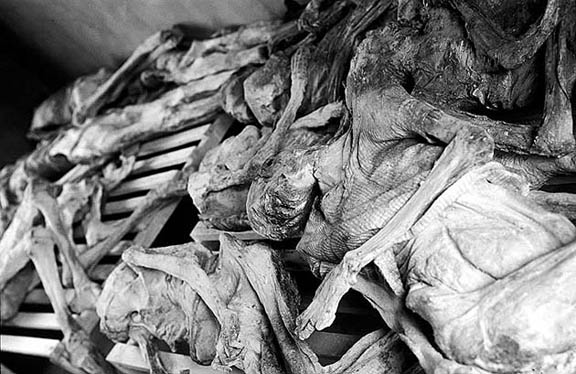
27 000 were massacred in this technical school in Murambi. Photo © Bruce Clarke
Symbol?
There will be no "depiction" in the artistic sense of the word.
Normally depiction is limited to the field of what can be depicted. It often lacks reverence for the victims and their families. It can make images of horror look banal and thus "normalise" the horror itself. We need memorials that encourage reflection and contemplation, which involve the onlooker. An abstract depiction transcends conventional forms and encourages reflection, respect, and humanity.
Land covered with one million stones posed regularly could look like a non-confessional cemetery. However, signs of different faiths will not be present, leaving to believers or to non-believers the choice to see religion or not in the site. To an extent, it will be a reappropriation of the spirituality. "Garden" symbolises rebirth after death.
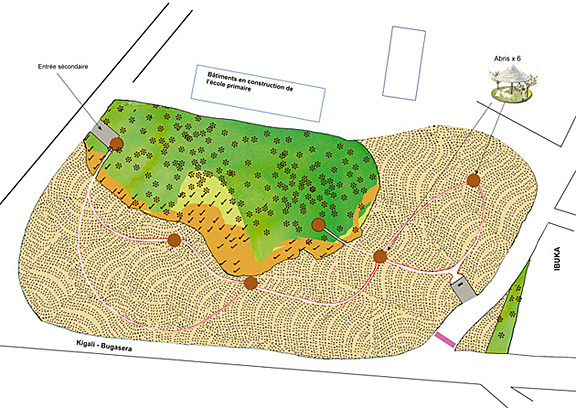 Artistic aerial representation of the Garden of Memory, 2009
Artistic aerial representation of the Garden of Memory, 2009
Contemporary Art?
The Garden of Memory is a project that, despite its memorial role fits into a tradition of contemporary art. One only needs to think of works by Tony Cragg, a Land artist, or the sand painting of the Navajos to see the parallel. We could also cite the Vietnam War Memorial in Washington by Maya Ying Lin in a similar tradition of contemporary memorial art.
However, it must be underlined that this project assumes fully its utilitarian function: the cathartic process implied in its construction, and the refusal to forget or negate the existence of the genocide. It is an artwork that fully assumes its political function.
"How can one depict the unnameable, the unimaginable?" is a question which has often been posed by artists. Contrary to other types of monumental art which establish a distance between the "artistic" and the "human", this work will be created by a whole community and will be an evocative synthesis of the relation between the survivors to the world in which they now live.
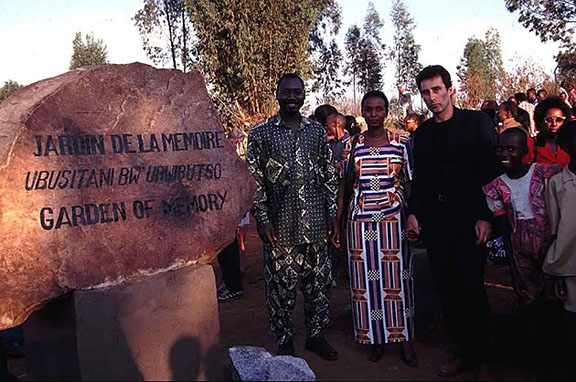
Some Rwandese personalities with Bruce Clarke at the entrance of the Garden of Memory


